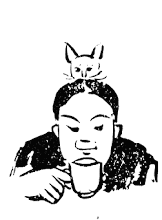The Eloquent Monster/ 怪物的口才
Peter Brooks, Body Work: Objects of Desire in Modern Narrative
Frankenstein’s immediate reaction to the appearance of the Monster is to tell it to go away. When the Monster persists in his claim that he has the right to a hearing from his creator, Frankenstein curses the day of the Monster’s creation, and reiterates: “Begone! Relive me from the sight of your detested form” (97). To this the Monster, in a touching gesture, responds by placing his huge hands over Frankenstein’s eyes: “Thus I relieve thee, my creator… thus I take from thee a sight which you abhor. Still thou canst listen to me, and grant me thy compassion.” The Monster understands that it is not visual relation that favors him—indeed, as we will discover when he tells his own story, his only favorable reception from a human being thus far has come from the blind de Lacey—but rather the auditory or interlocutionary, the relation of language. Thus, this first meeting of Frankenstein and his Monster since the day of his creation presents a crucial issue of the novel in the opposition of sight and language, of the hideous body and the persuasive tongue.
For the Monster is eloquent. From the first words he speaks, he shows himself to be a supreme rhetorician, who controls the antitheses and oxymorons that express the pathos of his existence: “Remember that I am thy creature; I ought to be thy Adam, but I am rather the fallen angel, whom thou drivest from joy for no misdeed. Everywhere I see bliss, from which I alone am irrevocably excluded. I was benevolent and good; misery made me a fiend. Make me happy, and I shall again be virtuous” (95-96) When we learn of the Monster’s self-education—and particularly his three master-texts, Milton’s Paradise Lost, Plutarch’s Lives, and Goethe’s Werther—we will understand the prime sources of his eloquence and of the conception of the just order of things that animates his plea to his creator. But beyond the motives of eloquence, it is important to register the simple fact of shelley’s decision to make the Monster the most eloquent creature in the novel. This hideous and deformed creature, far from expressing himself in grunts and gestures, speaks and reasons with the highest elegance, logic, and persuasiveness. As a verbal creation, he is the very opposite of the monstrous: he is a sympathetic and persuasive participant in Western culture. All of the Monster’s interlocutors—including, finally, the reader—must come to terms with this contradiction between the verbal and the visual.


没有评论:
发表评论